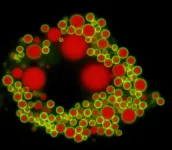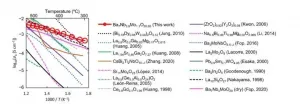(Press-News.org) CHAMPAIGN, Ill. -- Absent a widely available vaccine, mitigation measures such as stay-at-home mandates, lockdowns or shelter-in-place orders have been the major public health policies deployed by state governments to curb the spread of COVID-19.
But given the uncertain duration of such policies, questions have been raised about the potential negative mental health consequences of extended lockdowns with indefinite end dates. But according to new research co-written by a team of University of Illinois Urbana-Champaign experts who study the intersection of health care and public policy, the negative mental health effects of such lockdowns are temporary and gradually decrease over time as people adjust to their "new normal."
Research co-written by Dolores Albarracín, a professor of psychology and of business administration at Illinois, and Bita Fayaz Farkhad, an economist and a postdoctoral researcher in psychology at Illinois, found that social distancing policies correlated with immediate increases in interest in obtaining information about "isolation" and "worry" - but those effects tapered off two to four weeks after their respective peaks.
"Previous studies of the psychological impact of lockdowns during other disease outbreaks have indicated that quarantines are associated with increased mental health symptoms," Farkhad said. "We wanted to study how serious the mental health impact of the mitigation phase was during the initial COVID-19 outbreak last spring. Did it go beyond people feeling anxious or disheartened? Was it long lasting, and did it increase suicide ideation and the need for medical treatment for depression?
"These questions are, quite obviously, important from a mental and public health perspective."
Albarracín and Farkhad measured mental health trends from January 2020 through the end of June by analyzing daily, state-located search data via Google Trends, which afforded the researchers a large-scale search overview and the ability to parse information about searches for a given period in a search locale. The researchers first used a set of terms related to mitigation policies, and then obtained data on searches about mental health. The search data set also included terms for in-home activities.
The researchers found that the negative effects of stay-at-home orders weren't as dire as initially thought.
"At the outset of the pandemic, consistent with prior research, social distancing policies correlated with a spike in searches about how to deal with isolation and worry, which shouldn't be surprising," said Albarracín, also the director of the Social Action Lab at Illinois. "Generally speaking, if you have a pandemic or an economic shock, that's going to produce its own level of anxiety, depression and negative feelings, and we had both with COVID-19."
But the effects on searches for isolation and worry due to the mitigation policies were temporary and decreased gradually after peaking, the researchers said.
"Our findings showed that even though the mitigation measures increased negative feelings of isolation or worry, the effects were mostly transient," Farkhad said. "A potential explanation of this finding is that even though social isolation increased risk factors for mental health, the stay-at-home order also increased within-home hours that might promote new routines and greater social support within the family. Searches for activities such as 'exercise,' 'Netflix' and 'cooking' were positively associated with the stay-at-home policy, suggesting that individuals enjoyed spending more time at home."
Moreover, the policies correlated with a reduction in searches for "antidepressants" and "suicide," thus revealing no evidence of increases in severe symptomatology, according to the paper.
"It is possible that people who were able to work from home liked working from home, liked being able to set their own schedule and liked being able to exercise more, all of which has positive mental and physical health benefits," Farkhad said. "Although they might not be able to go out to a restaurant or bar, they have a little bit more control over other aspects of their life, which enhances well-being."
"That suggests that people adjusted to their new situation and that the negative mental health effects dissipated."
The public health policy implications are that if states need to go through an extended lockdown period again with COVID-19, health professionals ought to pay extra attention to people with acute cases of depression and anxiety, and target them for extra help via telemedicine, Farkhad said.
"However, the psychological distress following the lockdown orders is likely to be low compared with the overall health benefits of mitigating the COVID-19 pandemic," she said. "Implementing interventions aimed at increasing social connection and social support might be an important mechanism for addressing the potential negative psychological consequences if sheltering-in-place becomes necessary once again to tame the COVID-19 pandemic."
INFORMATION:
The paper was published in the journal Economics and Human Biology.
The research was supported by the National Institute of Mental Health, the National Institute on Drug Abuse and the National Institute of Allergy and Infectious Diseases.
The National Suicide Prevention Lifeline is a hotline for individuals in crisis or for those looking to help someone else. To speak with a certified listener, call 1-800-273-8255.
ITHACA, N.Y. - Researchers from Cornell University and the National Park Service have pinpointed and confirmed the location of the remnants of a wooden fort in Alaska - the Tlingit people's last physical bulwark against Russian colonization forces in 1804 - by using geophysical imaging techniques and ground-penetrating radar.
The fort was the last physical barrier to fall before Russia's six-decade occupation of Alaska, which ended when the United States purchased Alaska in 1867 for $7 million.
The Tlingit built what they called Shiskinoow - the "sapling fort" - on a peninsula in modern-day Sitka, Alaska, ...
During epileptic seizures, a large number of nerve cells in the brain fire excessively and in synchrony. This hyperactivity may lead to uncontrolled shaking of the body and involve periods of loss of consciousness. While about two thirds of patients respond to anti-epileptic medication, the remainder is refractory to medical treatment and shows drug-resistance. These patients are in urgent need for new therapeutic strategies.
Together with colleagues in Japan, Prof. Dr. Christine Rose and her doctoral student Jan Meyer from the Institute of Neurobiology at HHU have performed a study to address the cellular mechanisms that promote the development of epilepsy. While up to now, most studies and anti-epileptic drugs targeted nerve cells (neurons), ...
Findings of a new study published by researchers from Trinity College Dublin and St James's Hospital outline the health impacts faced by older people while cocooning during the Covid-19 pandemic. The findings are published in the Quarterly Journal of Medicine here: https://bit.ly/3qGKJoI.
Cocooning involves staying at home and reducing face-to-face interaction with other people and is an important part of the response to the COVID-19 pandemic, with an overall aim to prevent transmission to vulnerable older people. However, concerns exist regarding the long-term adverse effects ...
A new study from Indiana University researchers finds that most high-school age youth are willing to wear masks to help prevent the spread of the COVID-19 virus, but that more education is needed on how to wear masks properly and on the importance of consistent commitment to public health guidelines.
The study, published today in the Journal of Adolescent Health looked at 1,152 youth's mask wearing and social distancing behaviors during five, in-person live-streamed high school graduations from one U.S. public school district in early July 2020. These broadcasts allowed the researchers to systematically document social-distancing behaviors throughout the ceremonies and mask-wearing as students crossed the graduation stage ...
Coconut oil has increasingly found its way into German kitchens in recent years, although its alleged health benefits are controversial. Scientists at the University of Bonn have now been able to show how it is metabolized in the liver. Their findings could also have implications for the treatment of certain diarrheal diseases. The results are published in the journal Molecular Metabolism.
Coconut oil differs from rapeseed or olive oil in the fatty acids it contains. Fatty acids consist of carbon atoms bonded together, usually 18 in number. In coconut oil, however, most of these chains are much shorter and contain only ...
Research from North Carolina State University shows that extreme weather events, such as hurricanes and increased precipitation, affect both the amount and the composition of picophytoplankton in the Neuse River Estuary. The work is a first step in determining how a wetter climate may affect the estuarine ecosystem.
Picophytoplankton are defined as any phytoplankton measuring less than three micrometers in size. Although well studied as part of the oceanic ecosystem and food web, picophytoplankton are understudied in estuarine systems, even though they occur in significant numbers within these environments.
"Picophytoplankton are important primary producers in aquatic ecosystems," says Ryan Paerl, assistant professor of ...
DALLAS - Jan. 25, 2021 - Small cell lung cancer (SCLC) cells are missing a surface protein that triggers an immune response, allowing them to hide from one of the body's key cancer defenses, a new study led by UT Southwestern researchers suggests. The findings, reported online today in Cancer Research, a journal of the American Association for Cancer Research, could lead to new treatments for SCLC, which has no effective therapies.
Despite decades of study, SCLC - a subset of lung cancer that makes up about 13 percent of lung cancer diagnoses - has a very poor prognosis, with only about 6 percent of patients surviving five years after ...
Massive earthquakes are, fortunately, rare events. But that scarcity of information blinds us in some ways to their risks, especially when it comes to determining the risk for a specific location or structure.
"We haven't observed most of the possible events that could cause large damage," explained Kevin Milner, a computer scientist and seismology researcher at the Southern California Earthquake Center (SCEC) at the University of Southern California. "Using Southern California as an example, we haven't had a truly big earthquake since 1857 -- that was the last time the southern San Andreas broke into a massive magnitude ...
Scientists at Tokyo Institute of Technology (Tokyo Tech), Imperial and High Energy Accelerator Research Organization (KEK) Institute of Materials Structure Science, discover new Ba7Nb4MoO20-based materials with high oxygen-ion (oxide-ion O2-) conductivities--"the hexagonal perovskite-related oxides"--and shed light on the underlying mechanisms responsible for their conductivity. Their findings lead the way to uncovering other similar materials, furthering research on developing low-cost and scalable renewable energy technologies.
Over the past few years, fuel cells have become a focal point of research in eco-friendly technology because of their ...
Researchers from the Max Born Institute for Nonlinear Optics and Short Pulse Spectroscopy (MBI) have developed a new method to modify the spectral width of extreme-ultraviolet (XUV) light. By employing a novel phase-matching scheme in four-wave mixing, they could compress the spectral width of the initial broadband light by more than hundred times. The detailed experimental and theoretical results have been published in Nature Photonics.
Light, as emitted by the sun, consists of many different colors and typically appears as white. Sometimes, however, only certain colors reach our eyes, leading to stunning phenomena like an afterglow. For technical or scientific applications that require a specific color, gratings and prisms can be used to extract this color ...







